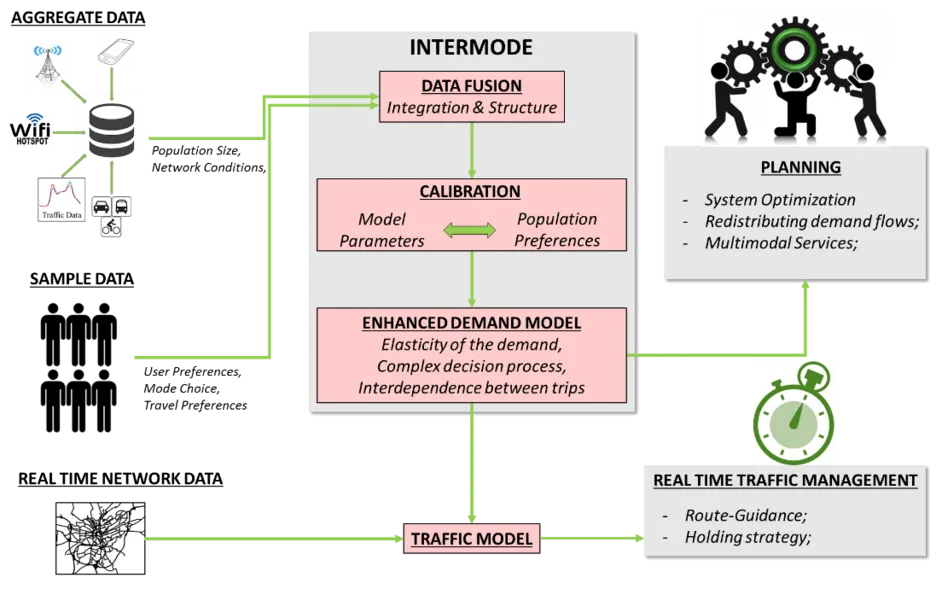INTERMODE Project
INtegrating Transportation sErvices thRough Multi-mOdal Demand Estimation
Duration: 2019-2020
Mobility as a Service (MaaS), multimodal transportation, electrified vehicles, and sustainable transportation services in general will play a fundamental role in shaping the future of mobility. As conventional transport planning models fail in reproducing these new solutions, in order to meet future demand without increasing emission levels, municipalities and local transportation departments urgently need new tools to design mobility solutions in a more efficient and cost-effective manner. The INTERMODE (INtegrating Transportation sErvices thRough MultimOdal Demand Estimation) project aims at filling this gap by developing new metrics and models to estimate the mobility demand, accounting for complex decision pro-cesses and integrated mobility solutions.
The architecture adopted in this project relies on three pillars. The first one collects information on user preferences in terms of mode choice, trip scheduling, and activity preferences. This information is retrieved from traditional and/or smartphone based travel surveys, which provide detailed information on a sample of the population. Then, the model leverages on aggregate data, representing the overall mobility demand, to model tours of activities and travel decisions at a network level. Mobile phone handovers and more conventional traffic data represent examples of this type of information. Once that these data have been properly collected and processed, the enhanced demand model is calibrated by considering available preferences in order to model complex human behavior and interconnected travel decisions.
The advantage of this scheme is twofold: municipalities would be provided with the potential demand for new mobility services and the possibility of estimating their benefit in terms of economic savings, travel time, NOx and CO2 reduction. Moreover, if real time data is available, the model can be combined with existing traffic tools to estimate atypical mobility patterns in real time, so that corresponding countermeasures can be taken in a timely fashion.
PIs: Guido Cantelmo (TUM), Prof. Constantinos Antoniou (TUM), Prof. Francisco Camara Pereira (Technical University of Denmark)
